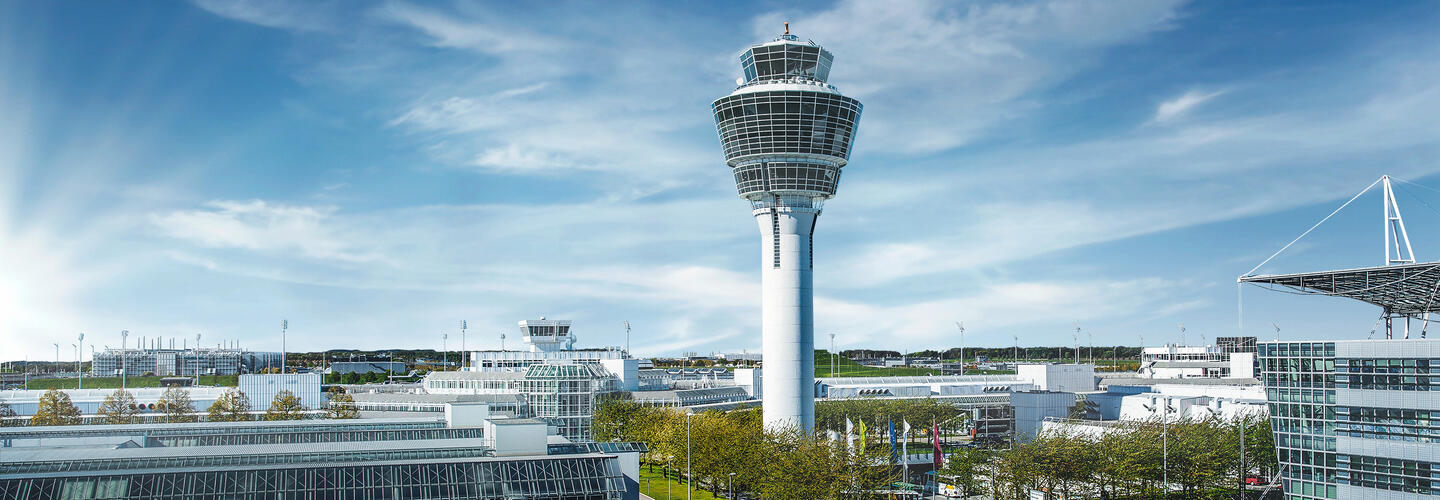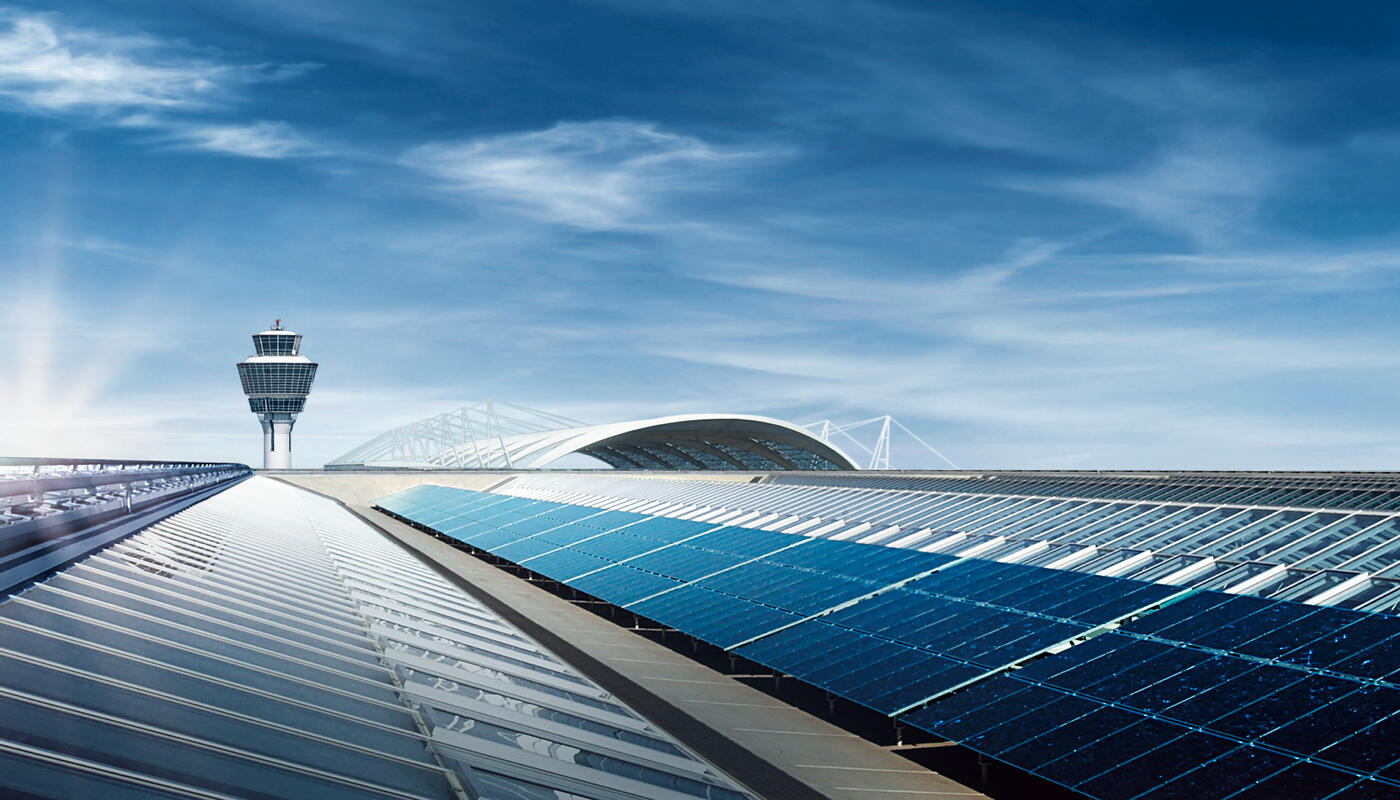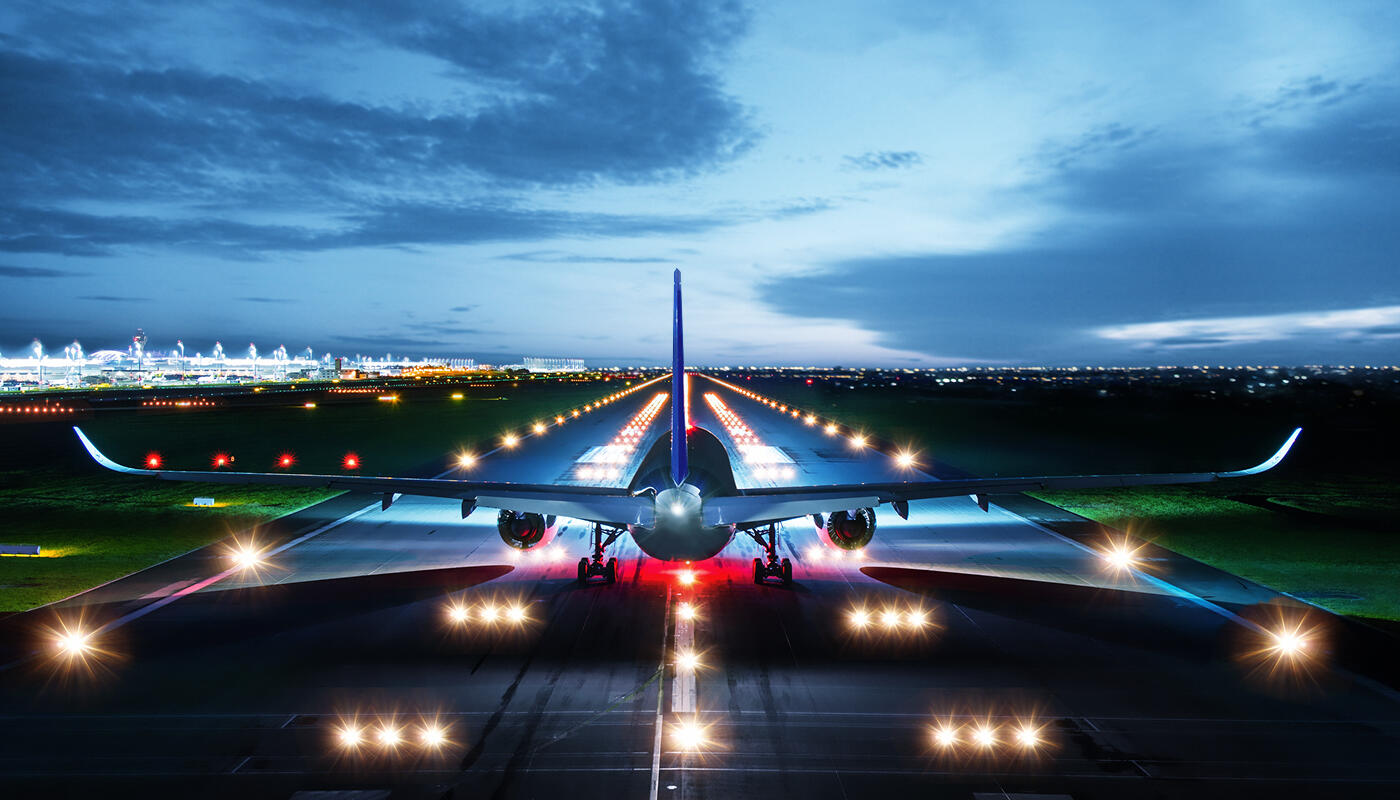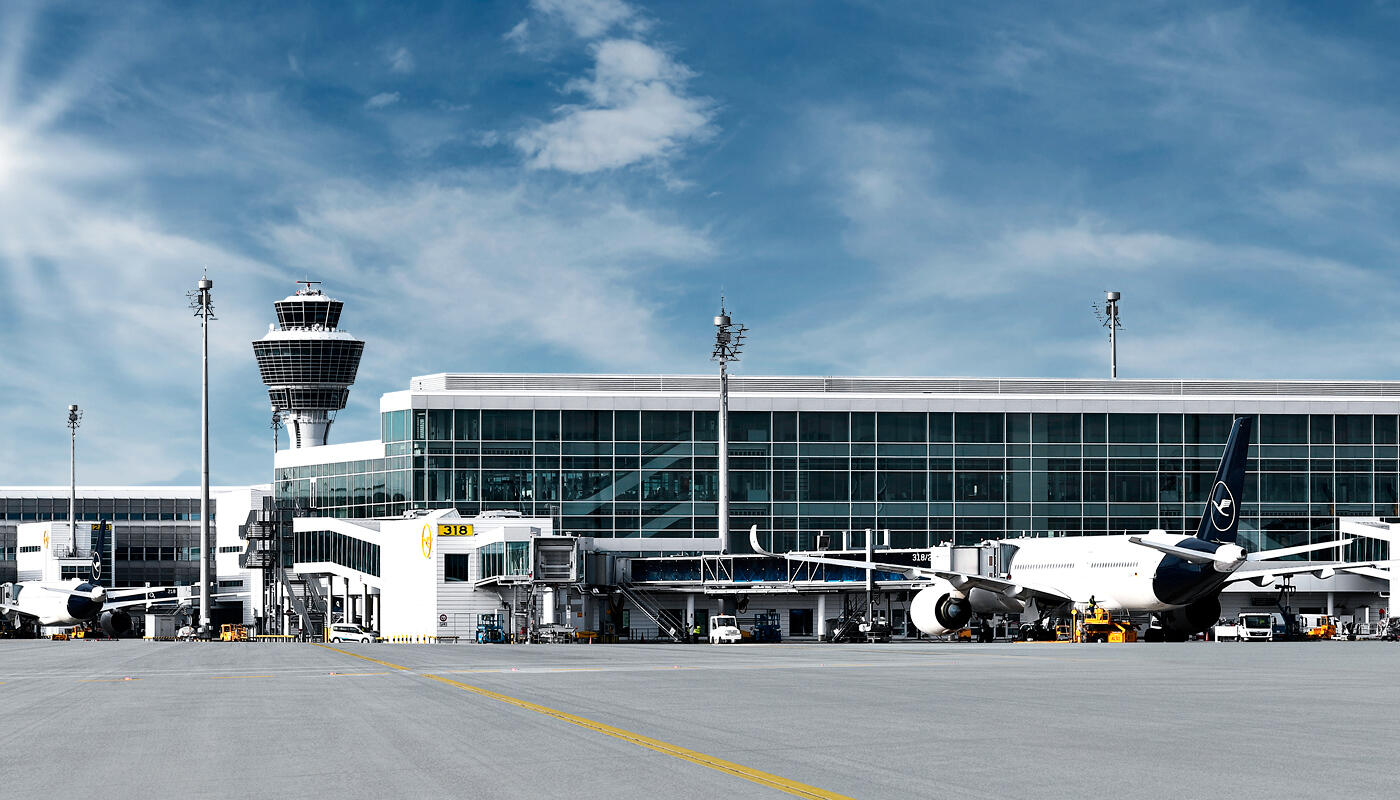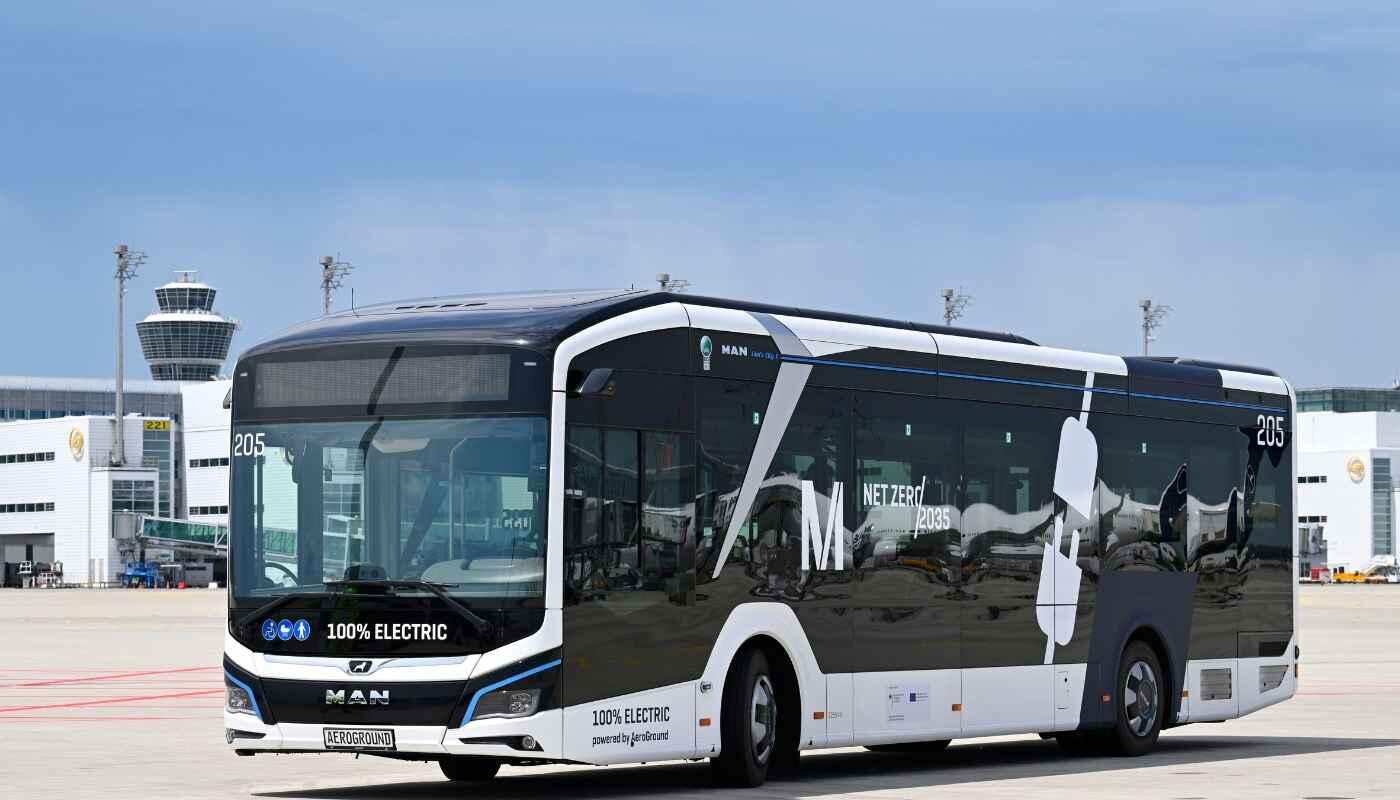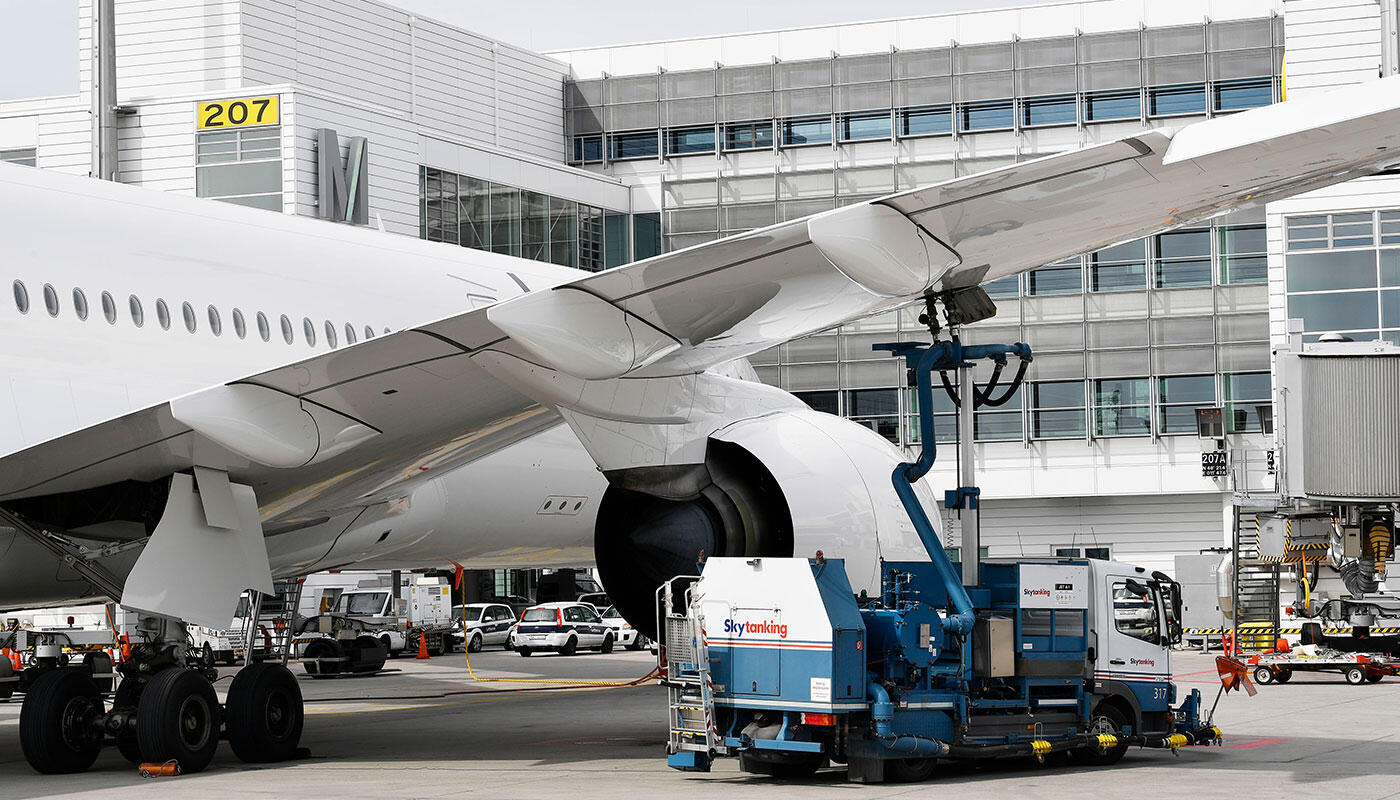From 2035 at the latest, we want Munich Airport’s operations to no longer leave any CO2 in the atmosphere. Achieving Net Zero means we need to reduce the emissions that we ourselves can influence – known as Scope 1 and 2 emissions – by a minimum of 90%. Suitable projects will be initiated to actively and permanently remove the remaining not more than 10% from the atmosphere. Our base year is 2016, when our carbon emissions amounted to around 100,000 metric tons.
To achieve Net Zero, we will take action in four areas: our energy supply, our technical airport facilities, our buildings and our vehicle fleet.
